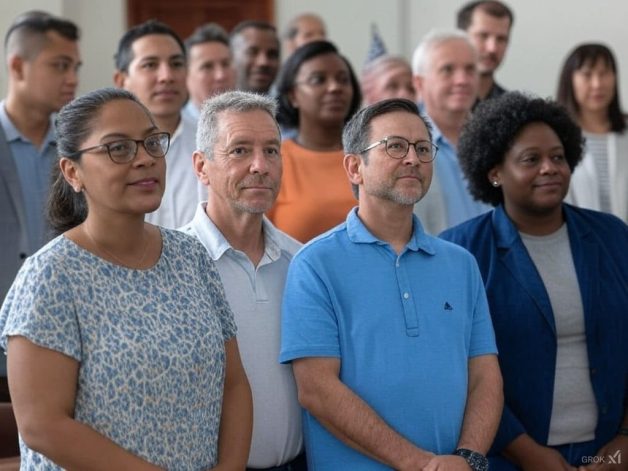Applying for asylum in the United States is a complex process that requires careful navigation of immigration laws and procedures. The asylum system in the U.S. provides protection to individuals who have suffered persecution or fear they will suffer persecution in their home country due to their race, religion, nationality, membership in a particular social group, or political opinion. Understanding the application process, eligibility requirements, and factors that influence approval rates is crucial for those seeking refuge in the United States.
The U.S. asylum system offers two primary pathways for individuals to seek protection: the affirmative asylum process y el defensive asylum process. The affirmative process is for those who are not in removal proceedings and can proactively apply for asylum. The defensive process, on the other hand, is for individuals who are in removal proceedings and use asylum as a defense against deportation. Additionally, a third pathway known as the Asylum Processing Rule was introduced in 2022, which combines elements of both affirmative and defensive processes on an expedited timeline for certain individuals arriving at the border.
To initiate the affirmative asylum process, applicants must be physically present in the United States or at a port of entry. The first step is to file Form I-589, Application for Asylum and for Withholding of Removal, with U.S. Citizenship and Immigration Services (USCIS). This form must be submitted within one year of the applicant’s last arrival in the United States, unless they can demonstrate changed circumstances that materially affect their eligibility or extraordinary circumstances relating to the delay in filing. The one-year filing deadline is a critical aspect of the asylum process, and failing to meet this requirement can significantly impact an applicant’s chances of approval.
Once the application is filed, USCIS will schedule a biometrics appointment for the applicant. This involves taking fingerprints and photographs, which are used for background checks and security screening. Following the biometrics appointment, applicants will receive a notice for their asylum interview. The interview is a crucial part of the process, where an asylum officer will assess the credibility of the applicant’s claim and determine if they have a well-founded fear of persecution if returned to their home country.
During the asylum interview, applicants must provide detailed accounts of their experiences and reasons for seeking asylum. It is essential to present a coherent and consistent narrative, supported by any available evidence such as documents, photographs, or witness statements. The asylum officer will ask probing questions to evaluate the credibility of the claim and to understand the nature and extent of the persecution faced or feared by the applicant.
For those in the defensive asylum process, the application is filed with an immigration judge as part of removal proceedings. In these cases, the applicant will have a hearing in immigration court, where they can present their case for asylum. The process is adversarial, with a government attorney arguing against the asylum claim. Applicants in defensive proceedings often face longer wait times due to the backlog in immigration courts.
En Asylum Processing Rule, introduced in 2022, created a streamlined process for certain asylum seekers arriving at the border. This rule aims to expedite the adjudication of asylum claims while still providing a fair opportunity for applicants to present their cases. Under this rule, asylum officers conduct credible fear interviews and, if the applicant passes, they may be placed in a streamlined asylum merits interview process rather than being referred to immigration court.
Regardless of the pathway, asylum applicants must demonstrate that they meet the legal definition of a refugee. This involves proving that they have suffered past persecution or have a well-founded fear of future persecution in their home country. The persecution must be on account of one of the five protected grounds: race, religion, nationality, membership in a particular social group, or political opinion. Additionally, applicants must show that their home government is either the persecutor or is unwilling or unable to protect them from persecution by non-state actors.
The chances of approval for asylum applications vary widely and depend on numerous factors. Historical data shows that approval rates have fluctuated over time and can be influenced by political administrations, changes in immigration policies, and global events. For instance, during the Trump administration, asylum approval rates decreased significantly due to policy changes and a more restrictive interpretation of asylum law. The Biden administration has sought to reverse some of these policies, potentially leading to higher approval rates in the future.
Approval rates also vary depending on the applicant’s country of origin, the specific immigration court or asylum office handling the case, and whether the applicant has legal representation. Data from the Transactional Records Access Clearinghouse (TRAC) at Syracuse University shows significant disparities in approval rates across different immigration courts and judges. For example, some courts have historically granted asylum at rates below 5%, while others have granted asylum at rates exceeding 50%.
One of the most critical factors influencing asylum approval chances is legal representation. Studies have consistently shown that applicants with legal counsel are significantly more likely to be granted asylum compared to those without representation. Abogados can help applicants navigate the complex legal requirements, gather and present evidence effectively, and prepare for interviews or court hearings.
The specific basis for the asylum claim also affects approval chances. Claims based on certain protected grounds may be more readily recognized and approved than others. For instance, claims based on political opinion or religion may be more straightforward to prove than those based on membership in a particular social group, which can be subject to evolving legal interpretations.
Recent changes in asylum policy and procedures have also impacted approval chances. The implementation of the “Remain in Mexico” policy (officially known as the Migrant Protection Protocols) during the Trump administration made it more difficult for asylum seekers to pursue their claims from within the United States. While this policy has been terminated, its effects continue to impact the asylum system.
The COVID-19 pandemic has also had significant effects on the asylum process. Border closures, travel restrictions, and health concerns have led to delays in processing and changes in procedures. The pandemic has exacerbated existing backlogs in the immigration court system, leading to longer wait times for asylum hearers and potentially affecting the overall approval rates.
In recent years, there has been an increase in asylum applications from individuals fleeing gang violence, domestic abuse, and climate-related disasters. These cases often present unique challenges in meeting the legal criteria for asylum, as they may not neatly fit into the traditional categories of persecution. Courts and asylum officers have grappled with how to interpret and apply asylum law in these evolving contexts.
The concept of “particular social group” has been a subject of ongoing legal debate and policy changes. This ground for asylum can encompass a wide range of characteristics, including sexual orientation, gender identity, and membership in certain family units. However, the interpretation of what constitutes a valid particular social group has varied over time and across different jurisdictions, affecting approval chances for certain types of claims.
Asylum seekers should be aware of potential bars to asylum eligibility. These include having participated in the persecution of others, having been convicted of a particularly serious crime, having committed a serious nonpolitical crime outside the United States, or posing a danger to the security of the United States. Additionally, individuals who have firmly resettled in another country before arriving in the U.S. may be ineligible for asylum.
The asylum process also includes provisions for derivative asylum status for certain family members. An individual granted asylum may petition for their spouse and unmarried children under 21 to join them in the United States as derivative asylees. This aspect of the asylum system recognizes the importance of family unity and extends protection to immediate family members who may also be at risk.
For those granted asylum, the benefits extend beyond protection from deportation. Asylees are eligible for certain federal benefits, are authorized to work in the United States, and can apply for a green card (permanent residency) after one year. This pathway to permanent residency and eventually citizenship is a crucial aspect of the asylum system, offering long-term stability and integration opportunities for those granted protection.
The asylum system in the United States continues to face challenges, including significant backlogs in both the affirmative and defensive processes. As of January 2025, there were over 1 million pending affirmative asylum applications with USCIS, and the immigration court system faced a backlog of over 2 million cases, many of which are asylum claims. These backlogs result in long wait times for applicants, sometimes stretching into years, which can impact the lives of asylum seekers and their families.
To address these challenges, various reforms and policy changes have been proposed or implemented. These include efforts to streamline the asylum process, increase resources for adjudication, and improve efficiency in case processing. However, balancing the need for expeditious processing with ensuring due process and fairness for asylum seekers remains a significant challenge.
The role of international agreements and cooperation in asylum policy has also become increasingly important. The United States has entered into agreements with other countries, such as the now-terminated “safe third country” agreement with Guatemala, which aimed to redistribute the responsibility for processing asylum claims. These agreements have been controversial, with critics arguing that they may undermine the rights of asylum seekers and potentially return individuals to unsafe conditions.
Climate change and environmental disasters have emerged as new drivers of forced migration, presenting challenges for the traditional asylum framework. While current U.S. asylum law does not explicitly recognize climate change as a basis for asylum, there is growing discussion about how to address the needs of climate refugees within existing legal structures or through new policy frameworks.
The intersection of asylum policy with broader immigration enforcement efforts has been a subject of ongoing debate. Policies such as expedited removal and detention of asylum seekers have raised concerns about due process and the treatment of vulnerable populations. Balancing national security interests with humanitarian obligations remains a complex issue in the administration of the asylum system.
Technology has begun to play an increasingly significant role in the asylum process. From the use of video conferencing for asylum interviews and court hearings to the development of artificial intelligence tools for case processing, technological advancements are shaping how asylum claims are adjudicated. While these innovations may offer opportunities for increased efficiency, they also raise questions about fairness, access, and the human element in asylum determinations.
The asylum system’s capacity to respond to large-scale humanitarian crises has been tested in recent years. Events such as the Venezuelan exodus, the Afghan evacuation, and ongoing conflicts in various parts of the world have led to surges in asylum applications. The U.S. government has had to develop special programs and allocate additional resources to address these situations, highlighting the need for a flexible and responsive asylum system.
Public perception and political discourse surrounding asylum and immigration continue to influence policy decisions and the overall climate for asylum seekers. Educating the public about the realities of the asylum system, the contributions of asylees to American society, and the United States’ international obligations regarding refugee protection remains an important aspect of maintaining support for the asylum program.
For individuals considering applying for asylum, it is crucial to seek reliable information and, if possible, legal assistance. Many non-profit organizations and legal clinics offer free or low-cost services to asylum seekers. These resources can be invaluable in navigating the complex asylum process and improving the chances of a successful application.
In conclusion, applying for asylum in the United States is a complex process that requires careful preparation and understanding of the legal requirements. While approval rates can vary widely based on numerous factors, being well-informed about the process, gathering strong evidence, and seeking legal representation can significantly improve an applicant’s chances. As the asylum system continues to evolve in response to global challenges and domestic policy changes, staying informed about current procedures and requirements is essential for those seeking protection in the United States.
Website citations used for this article:
- https://www.uscis.gov/humanitarian/refugees-and-asylum/asylum/obtaining-asylum-in-the-united-states
- https://www.americanimmigrationcouncil.org/research/asylum-united-states
- https://www.nolo.com/legal-encyclopedia/chances-winning-grant-asylum.html
- https://www.dhs.gov/sites/default/files/publications/USCIS%20-%20Quinquennial%20Report%20on%20Asylum%20Decision%20Trends%20and%20Factors_0.pdf
- https://www.gao.gov/blog/2017/08/16/asylum-seekers
- https://immigrationequality.org/asylum/asylum-manual/asylum-law-basics-2/asylum-law-basics-elements-of-asylum-law/
- https://immigrantjustice.org/issues/asylum-seekers-and-refugees
- https://www.migrationpolicy.org/research/outmatched-us-asylum-system
- https://www.usa.gov/asylum
- https://www.lawhelpny.org/resource/asylum-eligibility-and-applications









